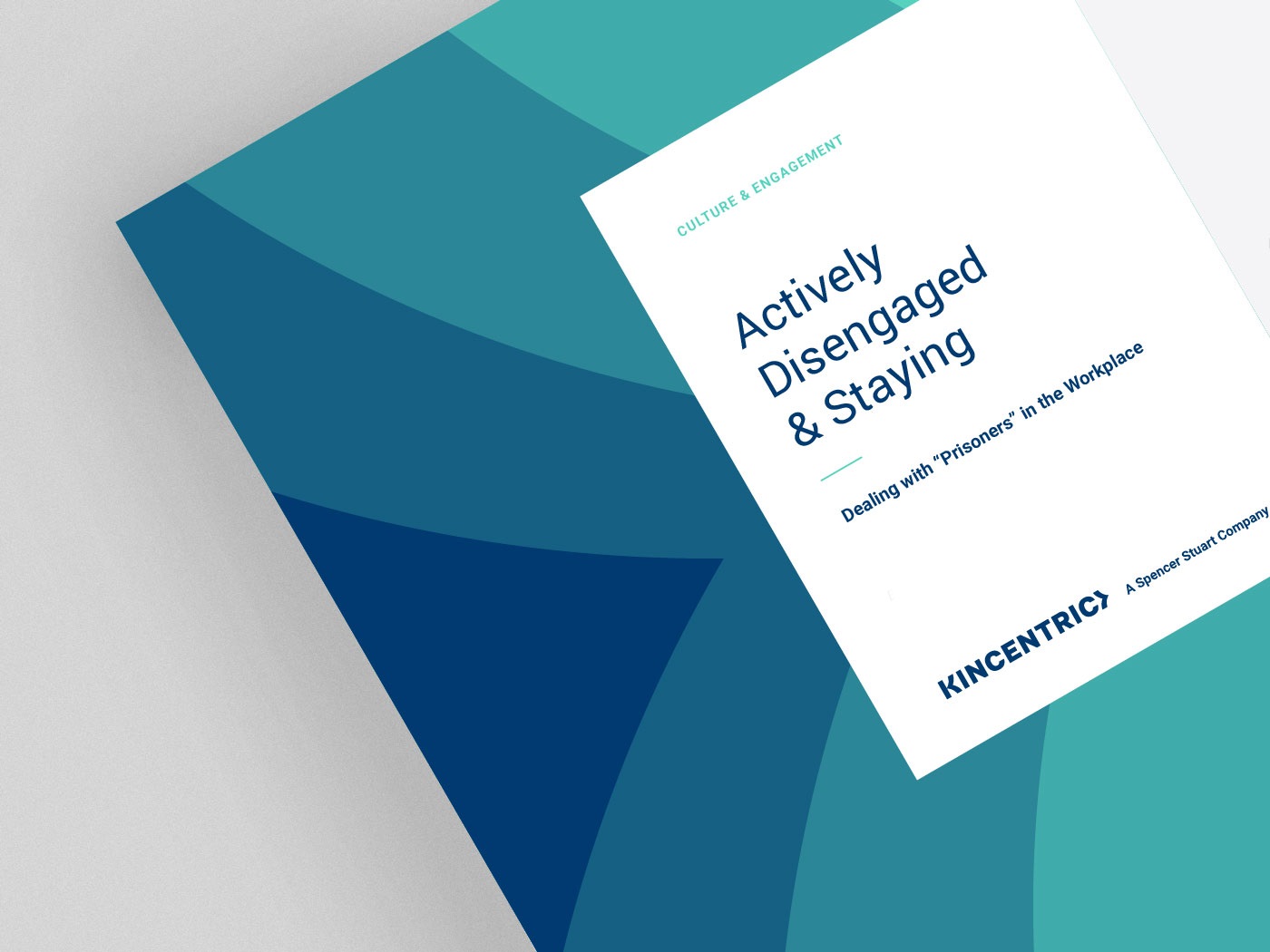
The unfortunate reality is that not all of your employees are going to be engaged. You can institute every program imaginable – but there will always be a subset of your organization that does not say positive things about your company, does not feel motivated to strive to give extra effort, and does not intend to stay with your company. All the same, this shouldn’t deter you from creating a culture of engagement.
However, there is perhaps a worse alternative to having a subset of disengaged employees. Imagine if your employees were not saying and not striving, but also had every intention to stay with your company. These are not your typical disengaged employees. They are the employees who are disengaged at work but also are not looking for other jobs and have little motivation to either improve or move on. While disengaged employees are more likely to “self-select” out of the organization, this is not always the case. These employees who intend to stay with the organization despite being disengaged are who we refer to as “Workforce Prisoners.” They lack the motivation to give their best and have no intention of leaving. They are also the focus of this article.
Why does this group matter? What if your company is full of employees who aren’t motivated to go the extra mile and who do not say positive things about the company? Not only would this hurt the attraction of new talent and negatively impact the work experience of your engaged employees, but it would undoubtedly hurt the bottom line. We have all interacted with one of these Prisoners at some point in our careers and we know how deflating they can be to our own engagement.
Many of us have managed a Prisoner and know how difficult it is to deal with an employee who is unhappy but has no interest in going anywhere.
These employees represent about 8% of the global workforce. That may not seem like a lot, but consider this: in an organization of 50,000 that means that there are, on average, about 4,000 Prisoners. That’s 4,000 employees who are keeping you from achieving your goals. Our goal at Kincentric is to "inspire your people to thrive" and these Prisoners do quite the opposite – it’s like trying to move your boat with the anchor still dropped. These Prisoners represent a critical outlier to consider when creating a culture of engagement.
 “A 'Workplace Prisoner' is someone who indicates they will stay at their organization despite a lack of motivation to give their best effort and a lack of positive things to say about their organization.”
“A 'Workplace Prisoner' is someone who indicates they will stay at their organization despite a lack of motivation to give their best effort and a lack of positive things to say about their organization.”
Using real client examples, this article investigates who these Prisoners are and what we know about them. We also provide key actions on how to manage your own organization’s Prisoners.
When profiling Prisoners, we find them higher among hourly represented (i.e., union) workers. This makes sense, since represented workers often score very high on the Stay component of engagement due to their negotiated employment contract.
The clearest demographic relationship for Prisoners, however, is tenure: more-tenured employees are significantly more likely to be Prisoners than less-tenured employees. This remains constant across various additional demographic cuts, whether by gender, race or age. Someone who has worked at an organization less than a year has approximately a 6% chance of being a Prisoner. In the one-to-two year tenure category, the incidence rate increases to 6.3% and climbs in each subsequent tenure category until it reaches a stunning high of 17.1% for the 26+ year category. These employees may feel they have been at their job long enough and deserve the pay they have without earning it. They may also feel entitled to the positions they hold, but they do not offer innovative ideas or feel the need to improve.
What does this mean for you? Obviously, if your organization has high tenure, you may be more predisposed to have a large proportion of Prisoners. It is also important because it suggests that if you have a problem with Prisoners, it is not going to fix itself. In fact, it appears that the incidence rate will only increase as more and more of your employees increase their tenure.
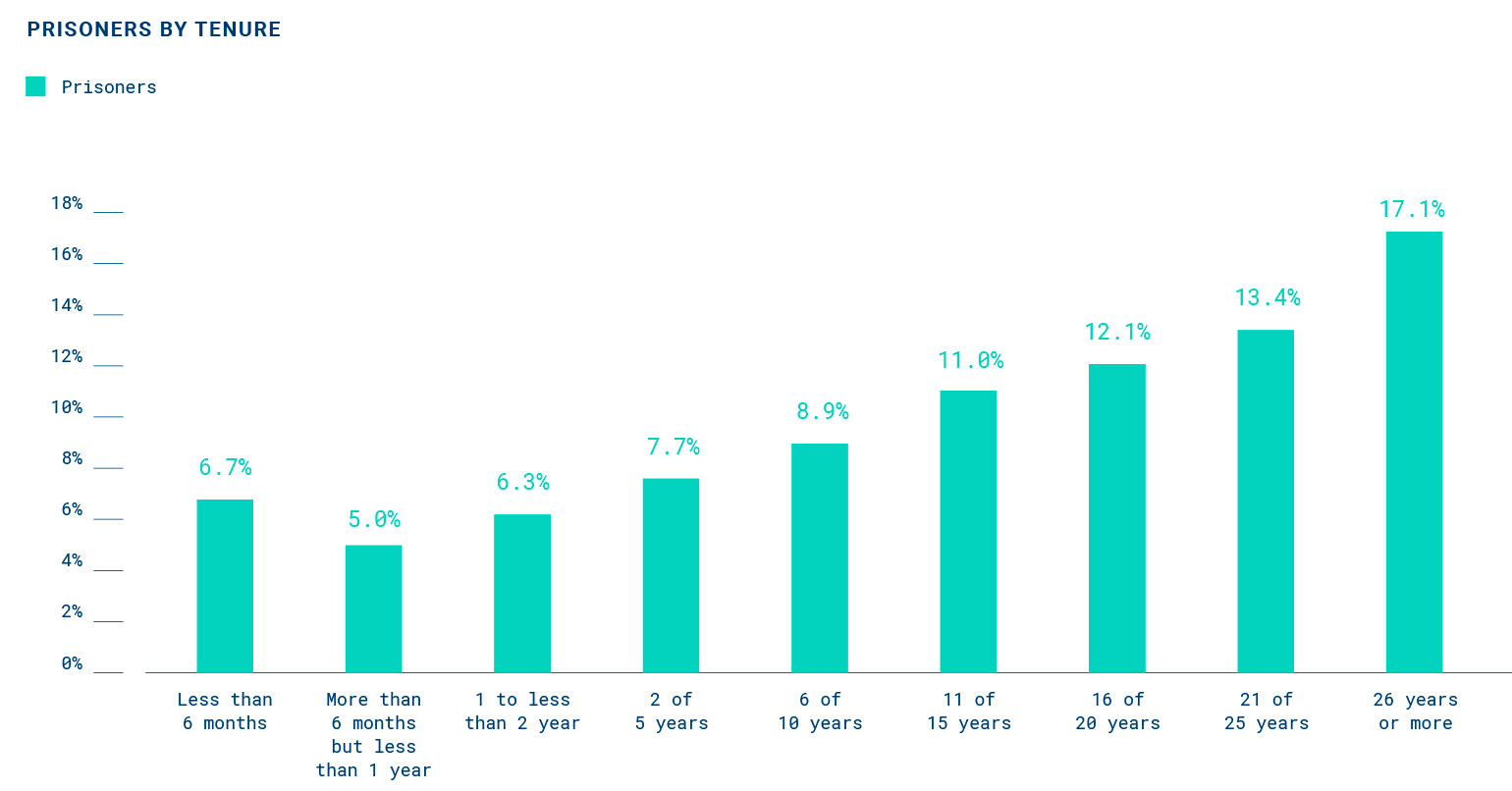
The Prisoner definition is predicated on high levels of “intent to stay” at the current organization. However, this is measured by whether an employee self-reports that they intend to stay with their organization. We all know that an employee can say they intend to stay and still leave – there is not a perfect correlation between the two. This begs the question: “Are Prisoners in fact more likely to stay with their organization than non-Prisoners?”
Across multiple case studies, we find that Prisoners, who all indicate that they intend to stay with their organization, voluntarily leave the organization at a lower rate than non-Prisoners who also indicate that they intend to stay. This suggests that Prisoners may in fact be even more likely to stay with their organization than the average employee. This is concerning considering they are not only dragging down engagement for their immediate team, but also hurting the overall performance of the business.
 “Prisoners may in fact be more likely to stay with their organization than the average employee.”
“Prisoners may in fact be more likely to stay with their organization than the average employee.”
Now that we have established that these Prisoners are actually staying with the organization at a higher rate than non-Prisoners, it is important to determine what is hurting their overall work experience. When someone is disengaged yet staying, they are generally going to perform at a sub-par level compared to other people in an organization. Indeed, we consistently find that Prisoners are less likely to be considered high performers within their organization. This is not a surprise. However, we found it very surprising that even though Prisoners are less likely to be high performers, they are also less likely than their peers to feel that the organization is retaining the right people to be successful. Think about that. This group of generally disengaged employees, who perform at a lower level than average, are especially critical of an organization’s retention strategy.
 “Less than 25% of Prisoners say that the way performance is managed keeps them focused on achieving.”
“Less than 25% of Prisoners say that the way performance is managed keeps them focused on achieving.”
Moreover, less than a quarter of Prisoners say that the way performance is managed keeps them “focused on achieving” their organization’s goals. For context, non-Prisoners are almost twice as likely to rate this item favorably, and this item had the greatest difference in perception between Prisoners and non-Prisoners.
Maybe these Prisoners are on to something. If their organization was better at assessing performance, leaders would be doing a better job of identifying under-performing Prisoners and putting them on performance plans or moving them out of the organization. This is one of the great ironies in examining Workforce Prisoners.
 “Non-Prisoners are almost 2x as likely to rate performance management favorably.”
“Non-Prisoners are almost 2x as likely to rate performance management favorably.”
We have established that more-tenured employees are more likely to be Prisoners. What other reason would someone want to stay when they have such a negative work experience? One potential reason seems obvious – pay! Employees may be likely to stay in a bad situation if they are paid sufficiently. Does the research support that?
First, Prisoners as a group scored very low on their perceptions of pay. In fact, only 24% responded favorably to the item, “I am paid fairly for the contributions I make to the organization’s success.” That compares to 46% of non-Prisoners responding favorably to the same item.
Next, when we look at objective pay (as opposed to perceptions of pay), we see that more competitively paid employees are more likely to be Prisoners. Examining the graph below from a client case study, we first see that as compa-ratio increases so does the incidence of Prisoners. However, intentions to stay remain relatively flat. Second, we see that just over 60% of Prisoners are paid more than 2-pts above market, compared to just 48% of non-Prisoners. These results suggest that being paid above market is one of the contributing factors to creating a Prisoner population.
These employees may be interested in leaving, but they do not look for opportunities elsewhere because they have done the research and have found that they are being paid more than they are worth in the open market. As a result, they sit tight.
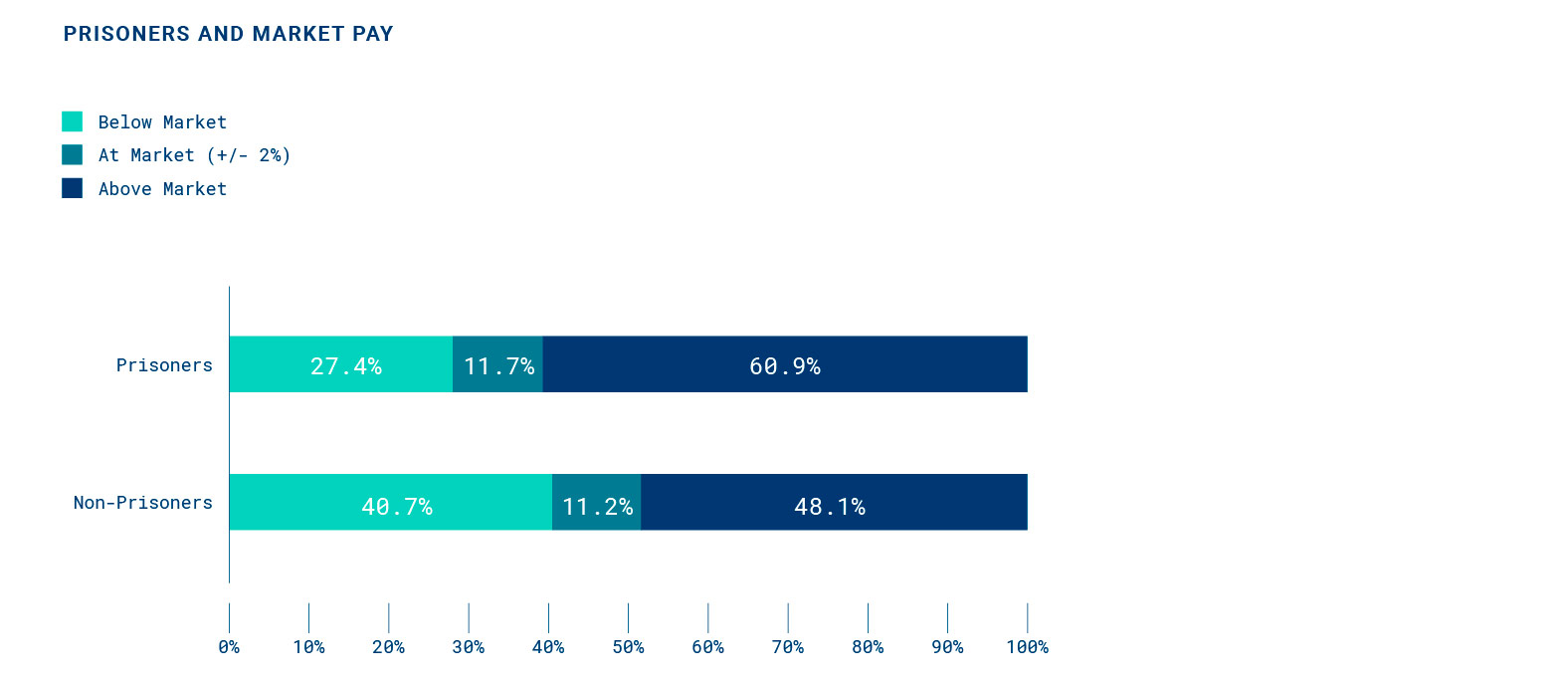
If you have ever managed someone who is a Prisoner you know how exhausting it can be. Even if the Prisoner performs at an adequate level, you can see how much potential is left unfulfilled. Do yourself, the Prisoner, and the organization a favor by addressing it head-on. Let the employee know you see their vast potential is unrealized. Ask them why they think that is. In many cases, the Prisoner may not even be aware their effort is sub-par and the conversation you have may surprise you. Don’t be shocked if the Prisoner is awakened in a way you didn’t expect. This is important, as only 40% of Prisoners report that their manager provides encouragement to do their best.
Go a little further and ask about their preferences. Focus on a few key drivers of engagement. Ask the Prisoner about their feelings on whether or not they are sufficiently recognized, what gives them a feeling of personal accomplishment at work and outside work, and discuss how they want their career to develop.
If the Prisoner can’t get excited about these topics, then a more difficult conversation has to happen. As mentioned above, the longer someone stays with an organization, the more likely they are to become a Prisoner. Remember that not everyone is willing to be engaged. If that is the case, begin discussions around whether or not this role is the right fit for them or if another job would be better. These can be difficult conversations to have, but are important for both you and the Prisoner in the long term.
 “Only 40% of Prisoners report that their manager provides encouragement to do their best.”
“Only 40% of Prisoners report that their manager provides encouragement to do their best.”
If you are a CHRO, HR executive, or HR manager, your role in eliminating Prisoners is critical. You can be the teacher for your leaders. Educate them on how to identify disengaged employees of all types. Go further by training them in how to have difficult conversations about how people are supposed to show up for work.
For new managers, you may have to back up even further and help them understand what engagement is and why it is important for their success as well as the success of the organization.
If you are CEO or the head of a business unit, your role is to set expectations and set the tone for your organization. In a culture of engagement, you believe engagement is important, you and your fellow leaders behave in a manner that demonstrates engagement is non-negotiable and engagement is factored into the decisions you and other leaders make.
Most organizations and senior executives do a good job around the "believe" part, but fail to consistently behave and make decisions around engagement. The best organizations factor in engagement when they are hiring, firing and promoting people. As CEO, you have to lead by example.
If you are a Prisoner yourself, there are a few things you can do. First, honestly answer some important questions. Can you be engaged at your current employer? What would it take? What can you do to make that happen? What do you need from your organization or leadership in order to bring your best to work? Once you have clear responses to these questions, begin having candid conversations with your leader.
If it is evident that you cannot engage at your organization, ask yourself another question. Is it worth it to stay at your organization and be miserable? The answer is very likely an emphatic “no.” Make a plan to move on. Being actively disengaged at work has a significant negative influence over who you are at home, among your friends, and in your community.
If you aren’t measuring employee engagement at your organization, it is time to start. Understanding the health of the organization is something that every organization should do. In fact, about half of organizations over 1,000 employees measure engagement annually, with a trend moving to measuring more than once a year.
For organizations already measuring engagement, take the next step and start looking at the size of your Prisoner population. Use the concepts in this paper to eliminate this population and move toward optimizing the employee experience and the way employees show up to work every day.
To talk with one of our experts about employee engagement or Prisoners in your workplace, contact us to set up a discussion. To access all our latest research about the employee experience, please go to www.kincentric.com/culture-and-engagement.
We would like to thank Don MacPherson and Ken Oehler, Ph.D. for contributing their insights to this article.
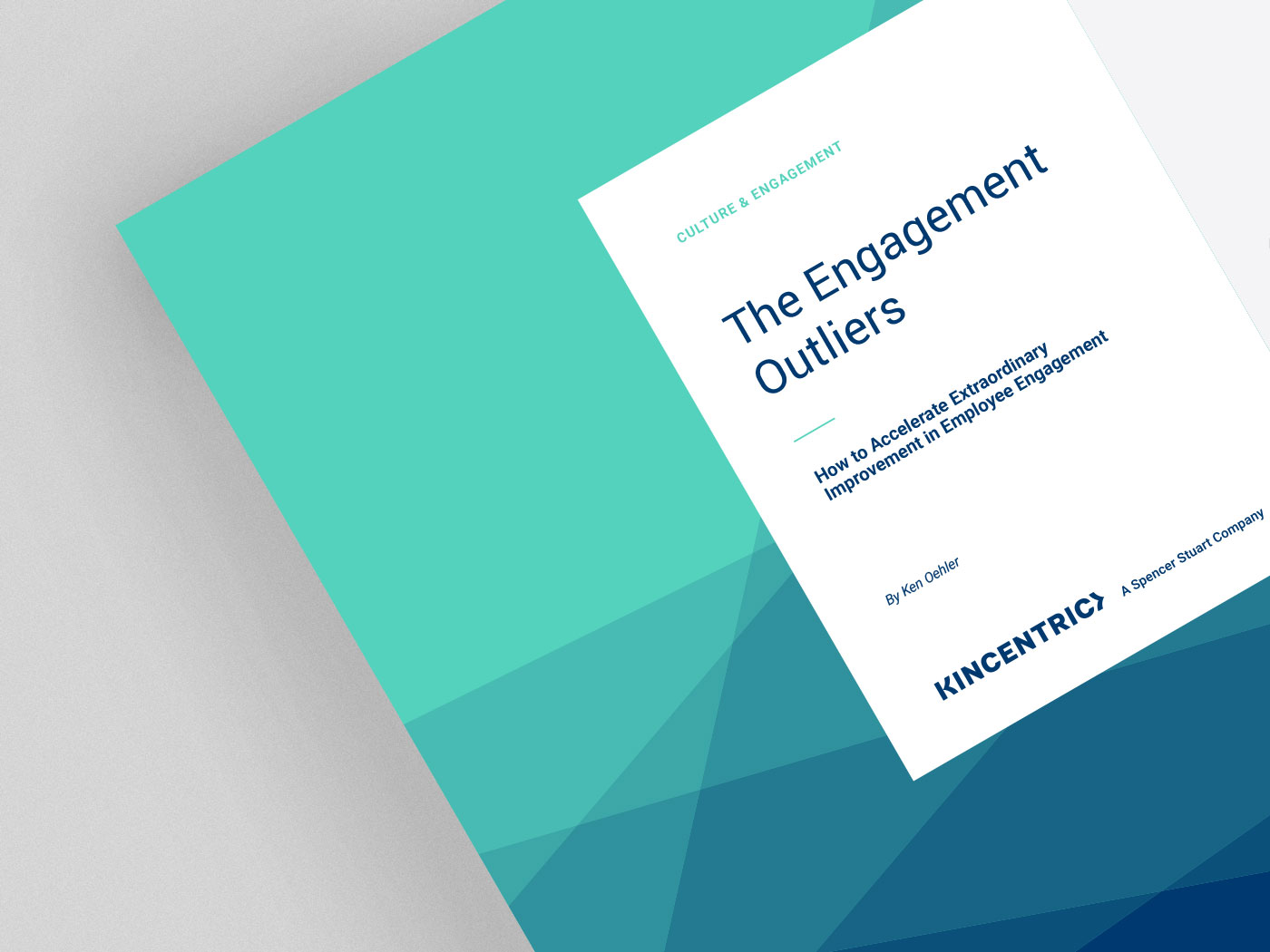
Achieving extraordinary employee-engagement improvement – quickly – is the real challenge. To do this, you have to push against inertia and move people and your organization much further and faster than they would go under ordinary conditions.
Multiple translations are available.

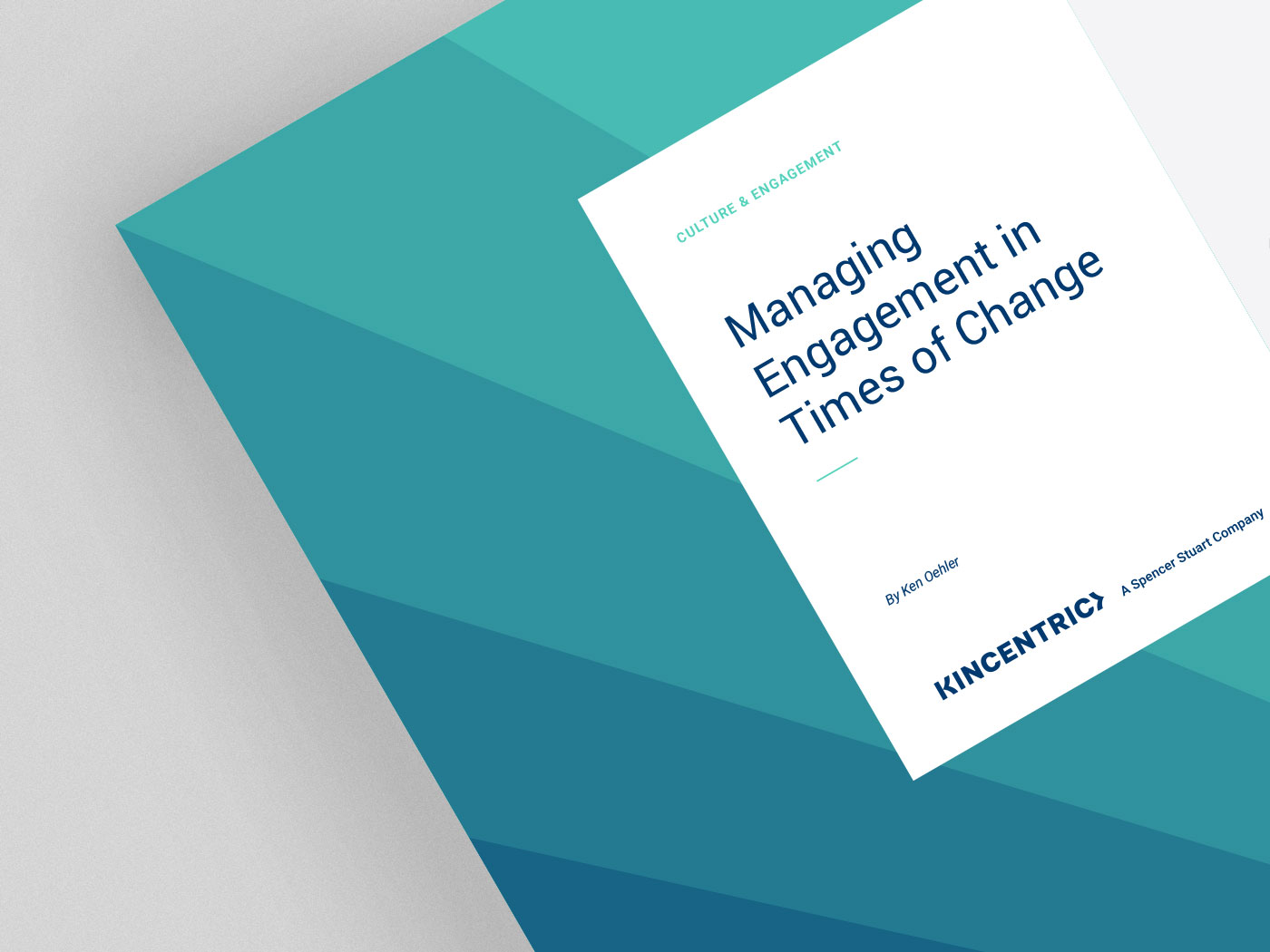
We have identified five tangible steps organizations can use to assess, understand, and take action on the employee engagement levels of employees during organizational change.
Multiple translations are available.